Dr Naomi Simmonds (Raukawa)
Dr Naomi Simmonds knows there’s a big difference between listening to tribal ancestral stories and actually experiencing the places involved first-hand.
That is why the mother of two strong-willed daughters is now leading a group of seven wāhine on a three-week hīkoi across the North Island to rediscover the journey of the famous Maori ancestress Māhinaarangi, who walked, while heavily pregnant, 500kms from the lands of her people in Kahungunu (near Te Aute in the East) to those of her husband, Tūrongo, at Rangiātea (near Te Awamutu).
“I’ve romanticised her journey in my head. So when I was learning about it in theory, hearing the stories, it seemed like this solo woman who is pregnant, with her dog, walked through the bush and did this seamless journey. But actually doing this hīkoi, is teaching us about the practical things she would have done, the emotional and spiritual preparation that is required as well.
“There’s a difference to physically going to places we know rather than learning through books, or story or from a computer screen. I think we get something different when we are physically and spiritually in that place.”
For Dr Simmonds, Senior Lecturer and Researcher at Te Whare Wānanga o Awanuiārangi, this hīkoi is the culmination of her Marsden-funded research project which explores the tribal geographies encapsulated in Māhinaarangi’s journey and investigates how retracing this ancestral pathway can affirm and celebrate what it means to be a Raukawa woman in contemporary Aotearoa.
Having worked towards organising this hīkoi for such a long time, Dr Simmonds says she is looking forward to seeing what transformation she might personally experience.
“For me, a lot of it is a process of ‘unlearning’. Trying to strip away the layers I think I need in order to be a successful mother or to be a strong woman in this world and going back to our environment, and our land, and the stories of our ancestors as a way to find healing, strength and resilience to be a mother, and a woman in the world we live in.
“I’m also hoping to find some peace and calm and ways to navigate what seems like a very chaotic world. So this for me, this is a process of ‘undoing’ a whole lot of conditioning and learning that I don’t think has always served me well as a Māori wāhine.”
She hopes to inspire her own daughters (aged 10 and 4) and show them what’s possible by taking on a challenge that will physically and emotionally stretch her. “It is my goal that one day we’ll be able to do this journey together.”
The logistics of organising the hīkoi have been huge, and she’s grateful her sister, Hannah Simmonds, has helped coordinate the effort which has been hampered by COVID-19 and associated delays. “Hannah has been pivotal in making my big dream a reality and the fact she is my big sister is even more special.
“We’re doing this in a year where there is a lot of extra pressure and stress on individual families and individual women. Our workloads are really high so just getting to the start line for me feels like a big achievement this year!
“It also affirms for me why these kinds of journeys are so important. We are stripping ourselves back from all the stuff that we think makes life meaningful. It’s important to actually take ourselves out of that. Everything drops away once we take that first step… we can’t be available on our devices, we can’t do the housework… Everything else will take care of itself.”
Dr Simmonds says the hīkoi is not about trying to replicate Māhinaarangi’s exact journey.
“A lot of people have said ‘how do you know this will be authentic’ when we’ve got a support van and packs and so on. The landscapes that we walk through are so different to what she would have walked through and that’s part of the journey for us — understanding what’s changed in the world around us from when she did it and considering what those changes have meant for us.
“By learning about her and forming a different kind of relationship with her by walking in her footsteps, we’re learning a lot about ourselves.”
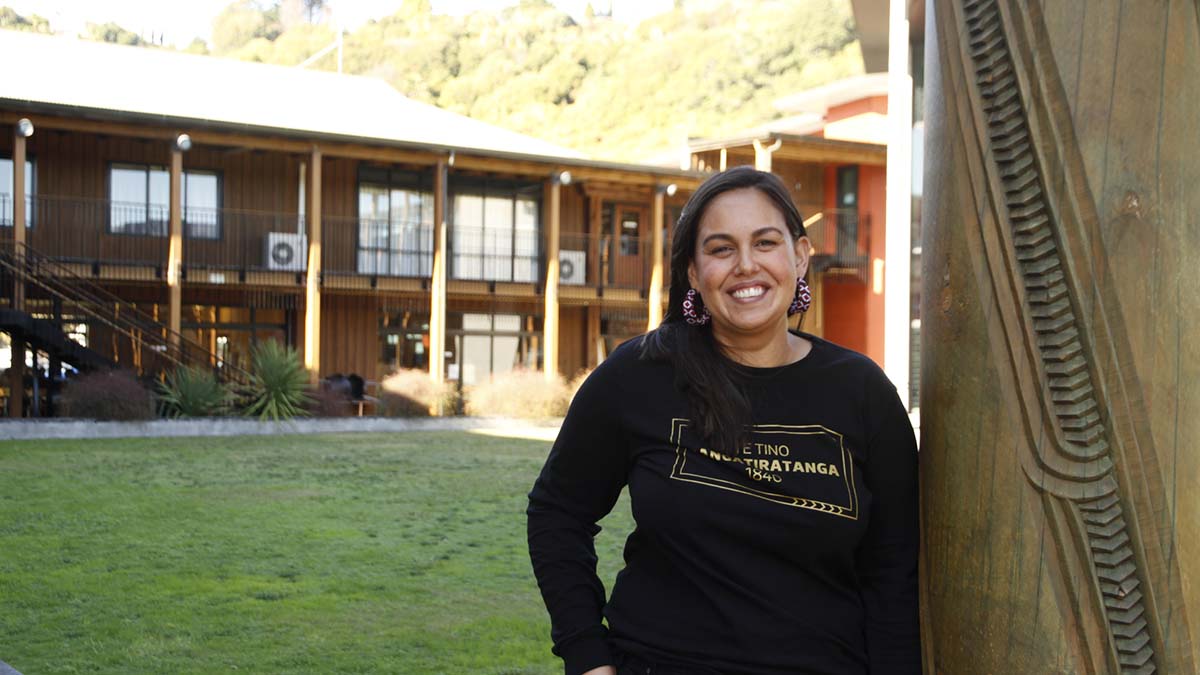
Dr Naomi Simmonds, Senior Lecturer and Researcher at Te Whare Wānanga o Awanuiārangi
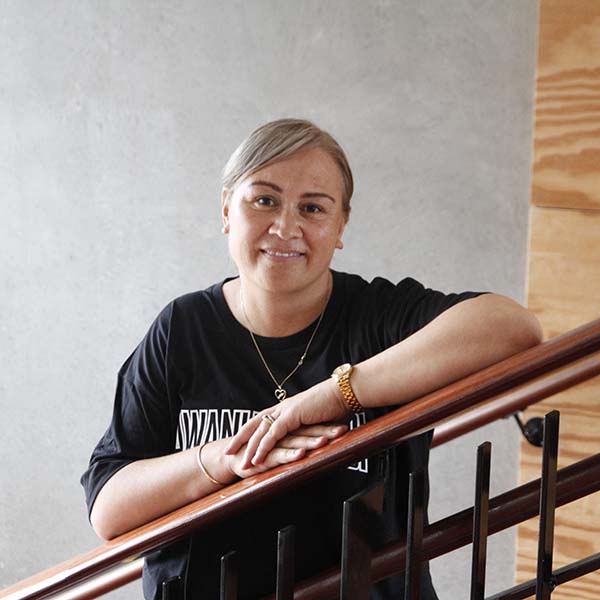
Lisa Begbie is excited to be doing the hikoi with her daughters
Lisa Begbie (Raukawa, Ngāti Ahuru)
Putaruru mother-of-four Lisa Begbie comes from a long line of mana wāhine and feels “very privileged” to be retracing the footsteps of Māhinaarangi.
“My mum, nan and aunties taught us that we could do anything we wanted to if we put our mind to it. And I do think this journey is going to be exactly that for all of us – physically, mentally, emotionally. It will be a journey of connection, a journey of mental and physical toughness. But everything goes back to Māhinaarangi and what kind of woman she was. To journey 500km on foot while she was pregnant? Man, that’s pretty amazing.”
Unlike her tūpuna, Lisa will have comfy shoes, a sturdy backpack and all the supplies she needs. But the hīkoi, from the Te Hauke region in Hastings to the Rangiātea Pā site near Otorohanga, is still a daunting prospect.
“The whole thing’s going to be a challenge. But we’ve got a group of pretty amazing woman to do it with. I think each and every one of us are all going to have days where we’ll just think ‘oh, I'm over this. I’m out.’ But the other seven will pick you up and vice versa. So I think we've got a great group of mana wāhine to do this hīkoi with.”
Lisa is a self-employed hairdresser and two of her four children, who range in age from 23 – 10, will join her on this adventure. The family used to live in Napier so are looking forward to revisiting the area, and the love story of Māhinaarangi and Tūrongo holds a special place in Lisa’s heart.
“Tūrongo came home and wanted to set up a place for his family. And then Māhinaarangi started her hīkoi home to him so it brings all of us together from Kahungunu right up to Raukawa, and that for me really reflects Māori and how we’re so whanau-based and how each place is brought together by a child.”
Lisa’s marae is Whakaaratamaiti in Putāruru, although she feels right at home at Pikitū Marae where her husband hails from, and where her own children have grown up.
“One thing I would tell people at a young age, if you can, is find out who you are. Get your pepeha from both sides of your whānau and connect to all of it – your maunga, your hapū, your iwi, your awa.
“Be proud of who you are, and where you’re from.”
K’Lee Begbie (Raukawa, Ngāti Huri, Ngāti Ahuru)
As a talented and self-motivated athlete, K’Lee Begbie will probably make light work of walking 400km in the coming weeks.
But the significance of the journey weighs heavily on her young shoulders. At 18 years of age, K’Lee is the youngest hīkoi participant and has chosen to take part for several different reasons.
“The walk of Māhinaarangi is a once in a lifetime opportunity to walk in the footsteps of your tūpuna and I’m doing this for my whānau. My Nan would have loved to have done this walk but she can’t because she’s got heart problems. So I’m doing it for her, and I’m also doing it for myself. I’m doing it to reconnect myself to the whenua. Living in this Pākehā society, it’s quite hard to connect with the whenua in every way, sense and form.
The New Zealand Māori Under 18 and Waikato representative rugby player is also looking forward to connecting with the legendary Māhinaarangi. “I feel like my relationship with her is quite distant at the moment. But I know she must have been such a strong woman to do what she has done – to leave her whānau, walk while pregnant, birthing and mothering along with way.”
K’Lee says she wanted to join the hīkoi from the moment Dr Naomi Simmonds floated the idea. “It’s been in the works for a couple of years and I just knew that I was definitely going to do it. Naomi is an amazing woman. She’s probably one of my favourite aunties. She’s always helped me out personally with a lot with my studies. When I need help she’s always there.”
The first year Waikato University student is studying law and Māori and wants to one day become a Māori land lawyer. Her advice to others wanting to connect with their tribal lands, history and knowledge is simple – learn where you’re from.
“Learn your pepeha and make the effort to go there and live and breathe it. Feel the land, feel the waters where you’re from, go to your marae. It feels so good to learn and reconnect.”
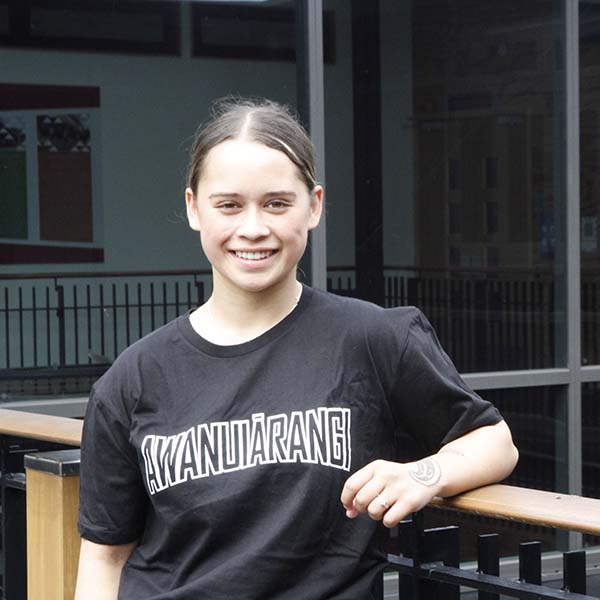
K'Lee Begbie is the youngest Kaihikoi at 18 years old
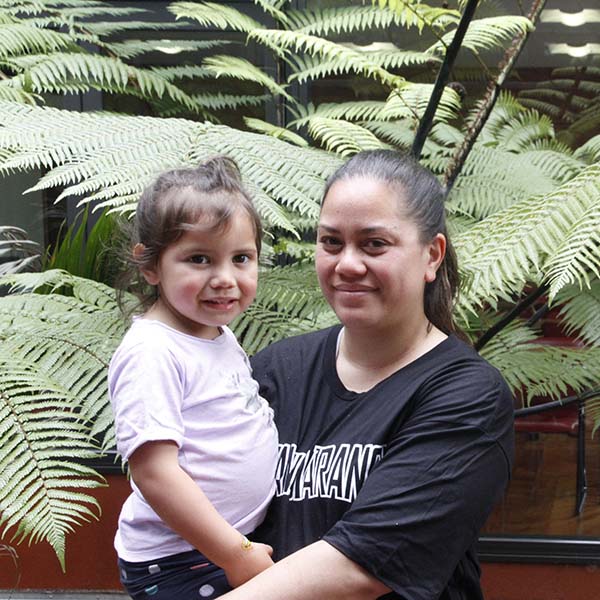
Arahia Moeke is connected to Māhinaarangi through her Raukawa and Te Aitanga a Mahaki connections
Arahia Moeke (Raukawa, Te Aitanga a Mahaki)
When Arahia Moeke performed kapa haka songs more than 15 years ago at Putaruru High School, little did she know that a special connection existed between her and the woman she was singing about – Māhinaarangi of Ngāti Kahungunu.
Nor did she have any idea she would one day retrace her tupuna’s footsteps during an epic 400km hīkoi.
Now a stay-at-home mum of four, Arahia has since discovered she can trace her connection to the legendary woman through both her father (Raukawa) and mother’s side of her whānau (Te Aitanga a Mahaki).
Her decision to join Dr Naomi Simmonds’ research hīkoi came from a desire to step outside her comfort zone and learn more about her tupuna in the process.
“I think it’ll also be an opportunity for myself to be grounded and find me again. Being a busy Mum, we tend to put everyone’s needs before ourselves.”
Arahia regularly volunteers at Ruru Te Tupuna Kōhanga Reo and is also undertaking a part-time internship at Raukawa to help develop a water quality monitoring framework. It was there that Naomi first suggested her old school friend join her hīkoi.
“Straightaway I said ‘yes’ because I knew I’d never get that opportunity ever again. And then I regretted it and thought ‘oh God, what have I got myself into!”
The 33 year-old doesn’t get much time to fit in physical exercise, running around after her children age one to nine years. But she’s excited for the challenge ahead.
“I’m just taking that leap. I think it’s so cool that my family, my Kōhanga Reo parents, my friends and my partner’s family have been very supportive and are willing to help look after our kids while I do this hīkoi.
“It’s actually quite impressive to see how much aroha and how much whānau support I’ve been getting, even when I break down and think ‘I can't do it’. They're like ‘no, you're gonna go.’ I think if your heart says to do something, you should just do it.”
There’s little doubt Māhinaarangi would have agreed.
Ngahuia Kopa (Raukawa ki Wharepūhunga)
Ngahuia Kopa has embodied Māhinaarangi on stage, and sung about her legendary journey across the North Island on foot, during spine-tingling kapa haka performances for the past 14 years.
Now, the 33 year-old manukura wāhine of Mōtai Tangata Rau will bring those stories to life and experience exactly what Māhinaarangi would have felt and seen as she left her family home on the East Coast and walked 500km to be with her husband.
“The love story of Māhinaarangi and Tūrongo is one of the greatest love stories of all time,” Ngahuia explains.
“Pretty much my whole life I have been singing about her and researching her through waiata and kapa haka.”
Ngahuia is joining Dr Naomi Simmonds and six other women on a research hīkoi to retrace the journey of Māhinaarangi and is looking forward to visiting the remote places that she’s only ever heard about in song.
“I’m from Raukawa ki Wharepuhunga which is one of many of the tribes and descendants of Māhinaarangi. We predominantly identify with the son of Māhinaarangi, Raukawa, so everything we sing about is associated to Raukawa. For 14 years we’ve been reviving a lot of our kōrero and our history and learning a lot about it but there’s only a couple of places within these compositions that we’ve actually visited. They’re just concepts.
“So as soon as I heard Naomi had put this hīkoi together, I jumped at the chance — even though it was 400 kilometres! But I thought ‘why not get involved?’ I wanted to actually know what it’s like to walk so far in order to be with your future husband.”
Ngahuia is involved in primary school education and also teaches Te Reo Māori. She is a whanaunga of Naomi’s through Ngāti Huri and wanted to support her research and learn more about genealogy/whakapapa and all those special connections along the way.
“Really I just want to experience that and what it was like. I know it’s never going to be anything close to, but to be able to actually touch these places with my own feet and to have images of all these places that we’ve been singing about and celebrating all of these years... I really wanted to get on board. And also to support Naomi. The research that she’s undertaken has been a huge feat. So, I wanted to support her in this as well.”
In preparation for the trip, Ngahuia has been walking 5-10km each day and doing lots of yoga and pilates to strengthen her body.
“It’s different terrain when you hit the road – very different from being on a treadmill! But I’m excited.”
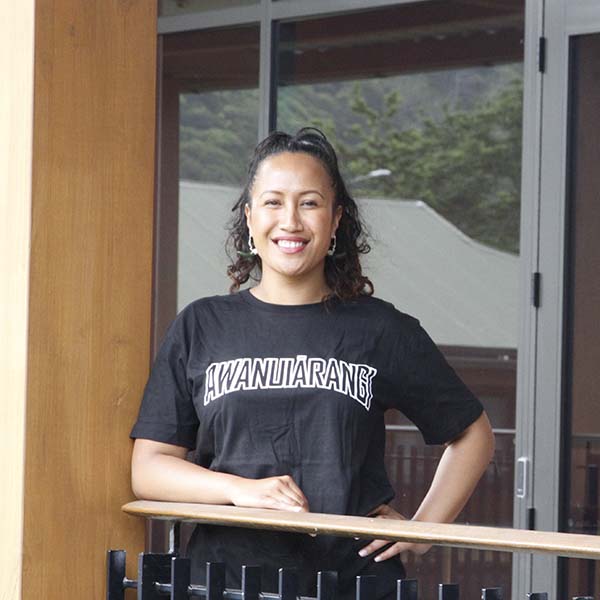
Ngahuia Kopa is from Raukawa ki Wharepūhunga
Kyea Watene-Hakaria (Raukawa)
A chance encounter, a cultural connection, and a legendary act of selflessness have all combined to lead Kyea Watene-Hakaria on the journey of a lifetime.
The 20 year-old is about to graduate from Waikato University with a Bachelor of Te Reo Māori and Māori Indigenous Studies and it was during a lecture series on mana wāhine in 2019 that she first heard Dr Naomi Simmonds speak about Māhinaarangi and the plan to retrace her 500km journey on foot.
“Naomi was presenting and I soon realised we were from the same iwi. I was just listening, and then that’s when I first heard about the hīkoi. We just walked out of that class and I remember thinking, ‘I don’t know how, and I don’t know when, but I’m going to get on that hīkoi.’”
Kyea’s chance came while undertaking an internship at Raukawa in early 2020 and she found herself in a meeting with Naomi.
“During the break I mentioned the walk and over the table we started talking about it. One thing led to another. A few months later she hit me up and said, ‘do you still want to do it?’ And I was like, ‘for sure’.
To this day, Kyea can’t quite explain her desire to take part. But she simply felt determined to join the research hīkoi from the moment she first heard about it.
“Within the university scene and within te ao Māori everyone always says, ‘you’ve got to follow in the footsteps of your tupuna’. And this is literally what I’m doing... following in the literal footsteps of Māhinaarangi. It just feels natural.”
Kyea admits she is fascinated by the long journey that Māhinaarangi undertook and is looking forward to furthering her knowledge.
“She was not only carrying her child during this walk, but she was also saying goodbye to her iwi. That’s why she set off so late in her pregnancy – so that her iwi could connect – because she knew that her duty was to be a mum and to take care of one of the next Rangatira.
“The story of Raukawa is quite pronounced within te ao Māori. Māhinaarangi and Tūrongo is one of the best love stories ever.”
What Kyea admires most about Māhinaarangi, and what she hopes to understand further in the coming weeks, is her act of selflessness.
“She entered a new role willingly. I just want to know how she felt. We know how the iwi felt, we know the result of what happened after she took this walk. But if she’d stayed, what would have happened? How would the dynamic have changed? How would my autonomy have changed because of that? I guess I just really want to tap into her selflessness that I see.”
Kyea has always known the long trip would be physically demanding: “But I’ve just now started to realise how emotionally and mentally exhausting it’s going to be as well.”
She has been trying to walk at least 5km each day to prepare: “The only way you can train for walking is by walking.”
She is still pondering what career path she’ll pursue, and is currently undertaking an internship at Te Puni Kōkiri’s regional office in Hamilton. Ultimately, she wants to work in either iwi governance or education, and is enjoying seeing where life takes her.
“To know that I’ve finished my degree, am doing an internship that I’ve always wanted, and that I’m about to embark on a cultural experience like this, 17 year-old Kyea would be so proud and so happy.”
Tyra Begbie (Raukawa, Ngāti Huri, Ngāti Ahuru)
Learning about the land has always been a passion for up-and-coming Waikato Rugby player Tyra Begbie.
The Bachelor of Environmental Planning student hopes retracing the journey of Māhinaarangi in the coming weeks will strengthen her university studies by providing new insight into te ao Māori.
“It just work so well together, my studies and this journey. I think it’ll help out heaps. Not many people can say that they’ve literally walked in the steps of their tupuna. That will give me a whole different perspective on everything,” she says. “Māori whakapapa forms the basis of everything within te ao Māori so doing this walk I think will intimately connect me to my whakapapa and my tupuna and everything else.”
As a member of Waikato Rugby’s Farah Palmer Cup squad for the past two years, Tyra says her biggest challenge will be to slow down and fully take in her surroundings during the hīkoi.
“I’m used to playing sports so always want to finish things fast. Just being able to slow down and connect to everything around me - all the elements of the environment, the birds, the trees, Papatūānuku and Ranginui – will be the hardest part I think.”
The 19 year-old is thrilled to be undertaking this experience with her own mum, Lisa, and younger sister, K’Lee. “We heard about it a while back from Aunty Naomi when it was still in the works and our whole family were just really keen to join the journey. We’re just excited for it.”
While Tyra is already physically fit, the challenge of walking 400km is still a big undertaking.
“Hopefully my body will hold up alright!”
She will have soon finished her second year at Waikato University, and once she has graduated, Tyra hopes to follow in her father’s footsteps and work in the environmental iwi space.
“My Dad works in the environmental sector for Raukawa. Just the mahi he does intrigues me so much. He goes around to all the wāhi tapu and gathers knowledge from those places and does a lot of work with policy making for the land in the Raukawa area. One day I hope to do something similar.”
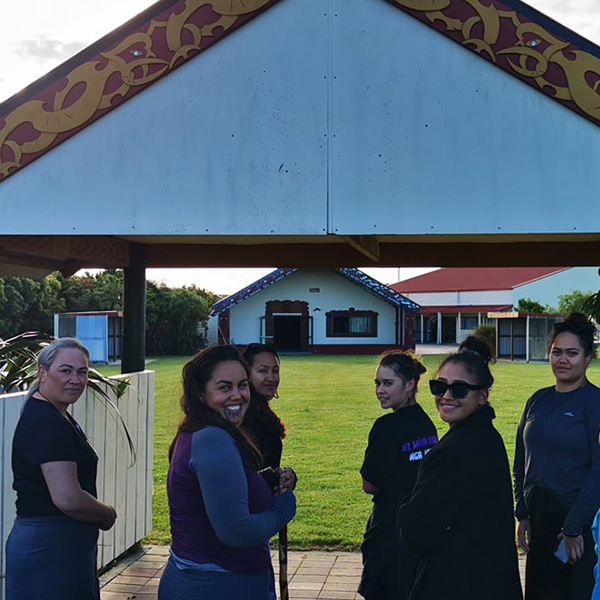
Tyra Begbie and Kyea Watene-Hakaria pictured far right with the team as they arrive at Pukemokimoki marae